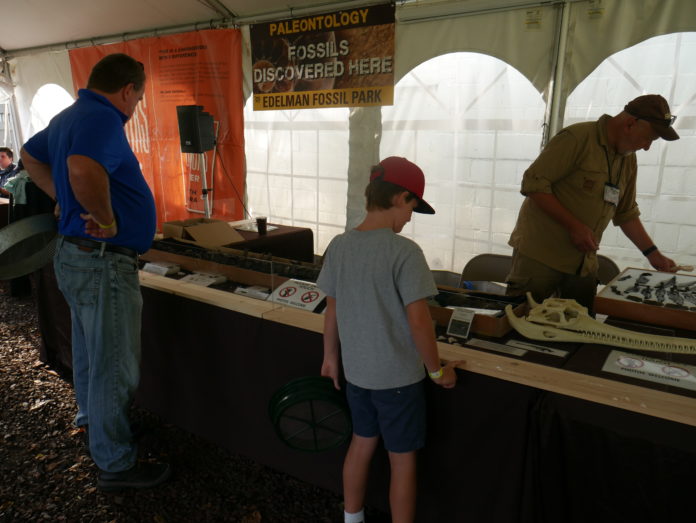
Paleontologist Dr. Kenneth Lacovara gave a second behind-the-scenes look at the fossils stored in Rowan’s paleontology lab. On Sept. 25, Lacovara was able to show fossils dating back 65 million years. For this round, he showed carefully preserved vertebrates and invertebrates that viewers anticipated seeing.
Lacovara showed a few crocodile fossils and pointed out features like the teeth, slender jaw and armored plates.
“These plates are covered with skin, and they are sort of embedded in the skin, and they help protect the animal,” Lacovara said.
Not only did viewers get to see fossils from all different species, but vivianite crystals, or oxidized minerals, as well.
“You can see these crisscrossing struts of crystal. What is happening here is we have a clam shell, and the clam shell has been invaded by vivianite crystals,” Lacovara said. “Vivianite is a very pretty mineral, but unfortunately if you want to keep the color you have to keep it in a little vial of water, or some way that keeps the air from touching it.”
For the fossils that are closely examined, Lacovara explained how every single one gets preserved to stay fully intact.
“When we take fossils out of the ground, we put them in what we call jackets. A jacket is burlap and plaster,” he said. “Just like you might do papier-mache, it helps protect the fossil as we take it out of the ground… we do not want to cover the top because it will never dry out and get moldy, so we put a rim jacket along the side, and then we slide a metal plate in underneath, and that is how we excavate the fossils. We then bring them into the lab, and we put some fans on them and dry out the sediment. Then, we can start to take them out and work on them.”
There are thousands upon thousands of fossils that are inside the paleo lab, but the exact number would be hard to guess.
“We have somewhere close to 50,000 fossils that are cataloged, but we have buckets and buckets of sediment that we could sieve to find micro-fossils. We could find millions, probably, if we sieve the sediment to a fine degree,” Lacovara said.
New Jersey has a history of paleontology that some may not know about. Lacovara shed light on how the Jean and Ric Edelman Fossil Park helps fill this void.
“The fossils that we get are really quite amazing. The Edelman Fossil Park is the best exposure into the time of the dinosaurs east of the Mississippi [River],” he said.
For comments/questions about this story, email features@thewhitonline.com or tweet @TheWhitOnline.





